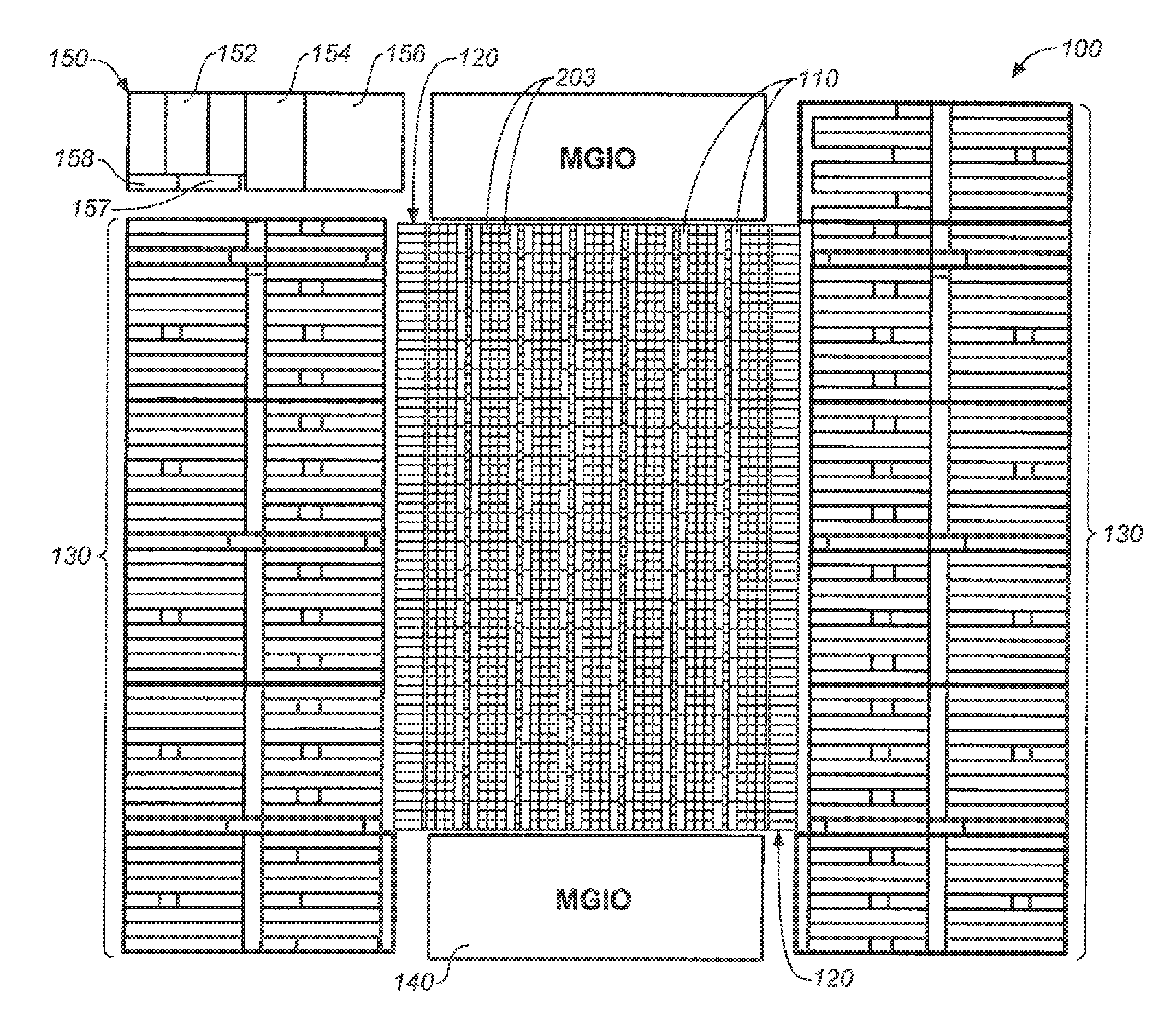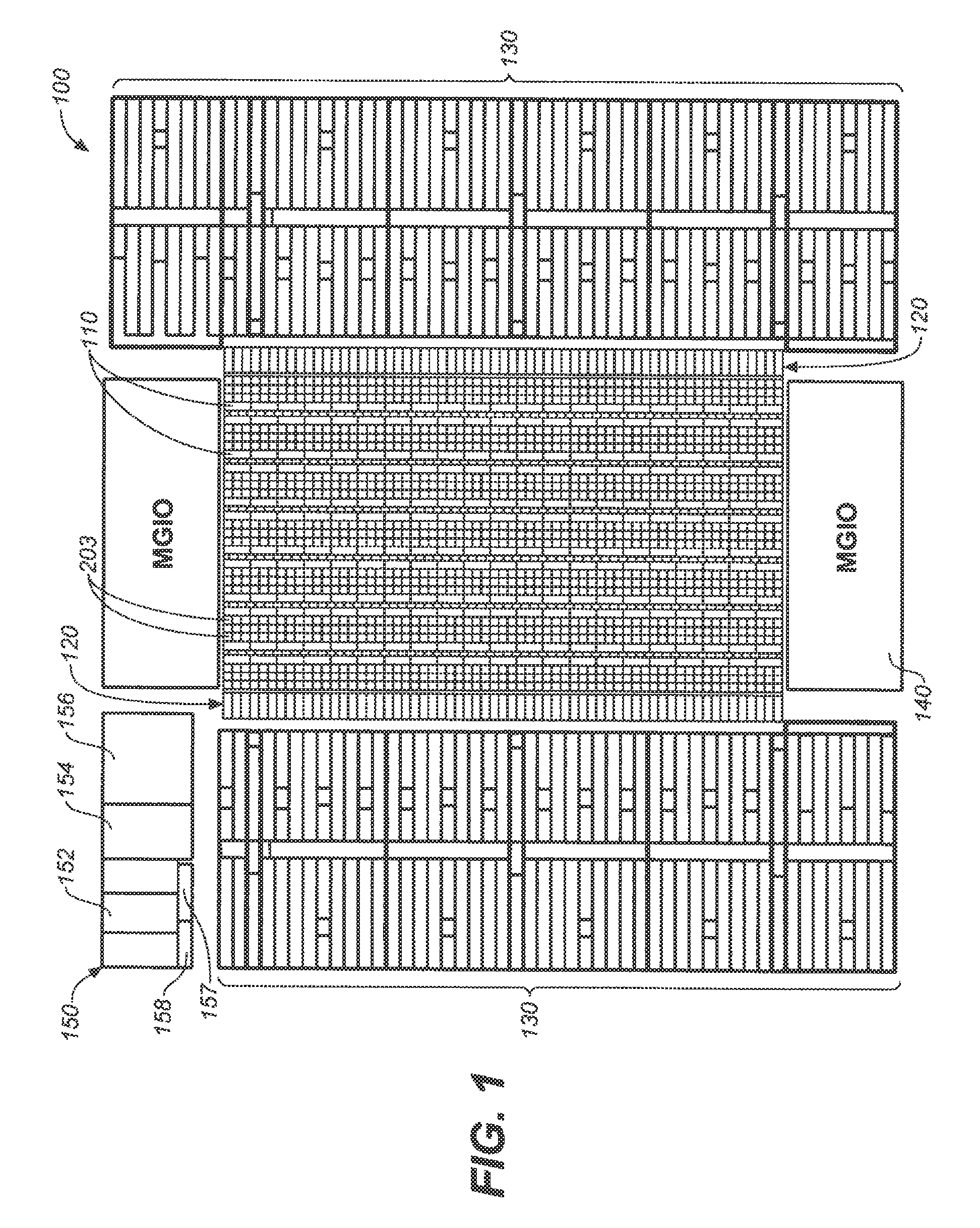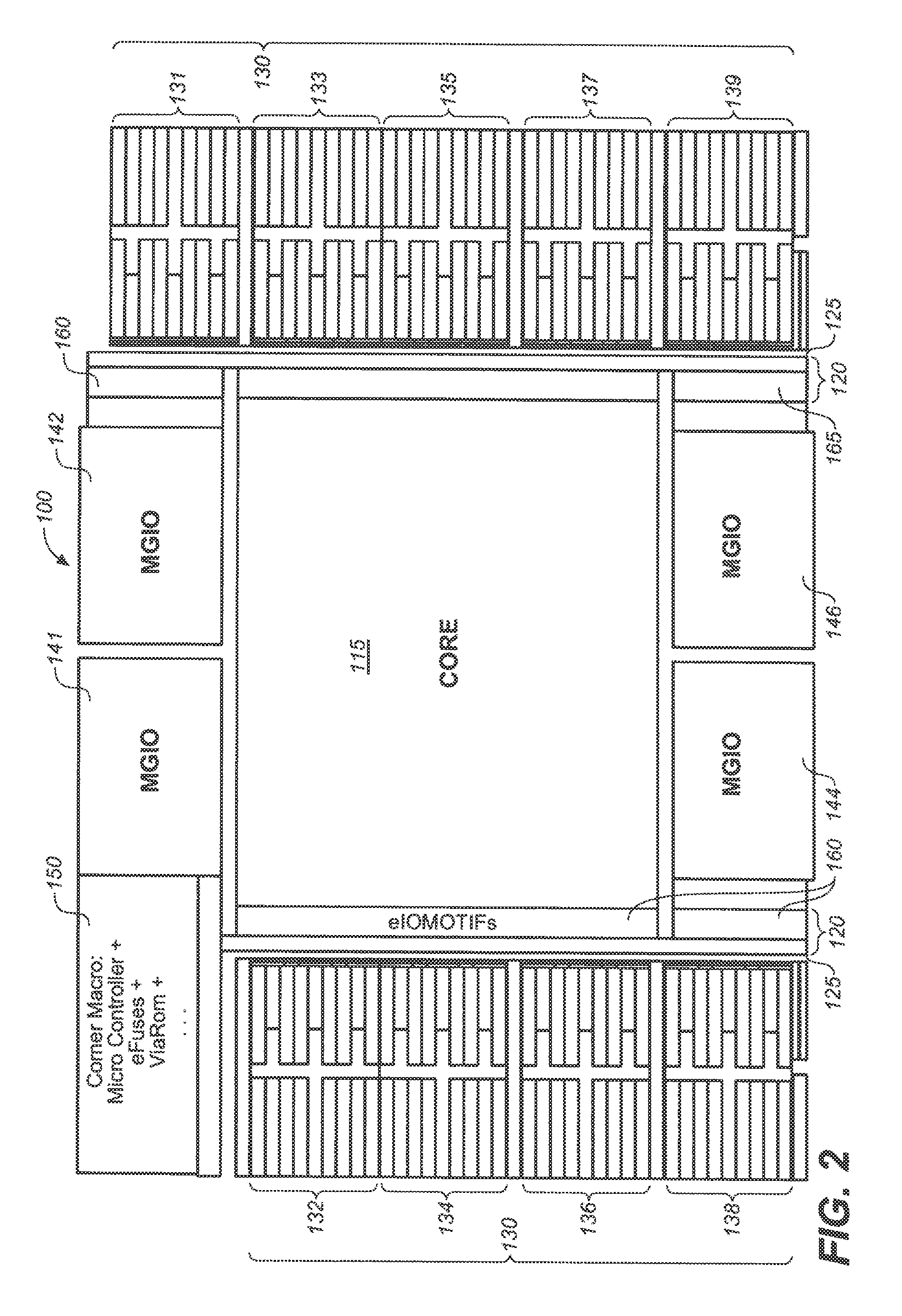Architectural floorplan for a structured ASIC manufactured on a 28 NM CMOS process lithographic node or smaller
a technology of lithographic nodes and architectural floor plans, which is applied in the direction of logic circuit coupling/interface arrangements, pulse techniques, instruments, etc., can solve the problems of wasting significant power in transitions within blocks, wasting time and effort, and limiting the maximum performance of the entire system
- Summary
- Abstract
- Description
- Claims
- Application Information
AI Technical Summary
Benefits of technology
Problems solved by technology
Method used
Image
Examples
Embodiment Construction
[0070]The method and apparatus of the present invention may be described in software, such as the representation of the invention in an EDA tool, or realized in hardwire, such as the actual physical instantiation.
[0071]Regarding the floorplan of the present invention, the drawings sometimes show elements as blocks that in a physical implementation may differ from this stylized representation, but the essential features of the floorplan should be apparent to one of ordinary skill in the art from the teachings herein.
[0072]The elements in the floor plan of the present invention are operatively connected to one another where necessary, as can be appreciated by one of ordinary skill in the art from the teachings herein.
[0073]According to an embodiment of the invention, there in shown in FIGS. 1 and 2, not to scale, a generalized floor plan architecture of the Structured ASIC chip 100, code-named the RUBY architecture, a Structured ASIC having some pre-made elements that are mask-program...
PUM
 Login to View More
Login to View More Abstract
Description
Claims
Application Information
 Login to View More
Login to View More - R&D Engineer
- R&D Manager
- IP Professional
- Industry Leading Data Capabilities
- Powerful AI technology
- Patent DNA Extraction
Browse by: Latest US Patents, China's latest patents, Technical Efficacy Thesaurus, Application Domain, Technology Topic, Popular Technical Reports.
© 2024 PatSnap. All rights reserved.Legal|Privacy policy|Modern Slavery Act Transparency Statement|Sitemap|About US| Contact US: help@patsnap.com










